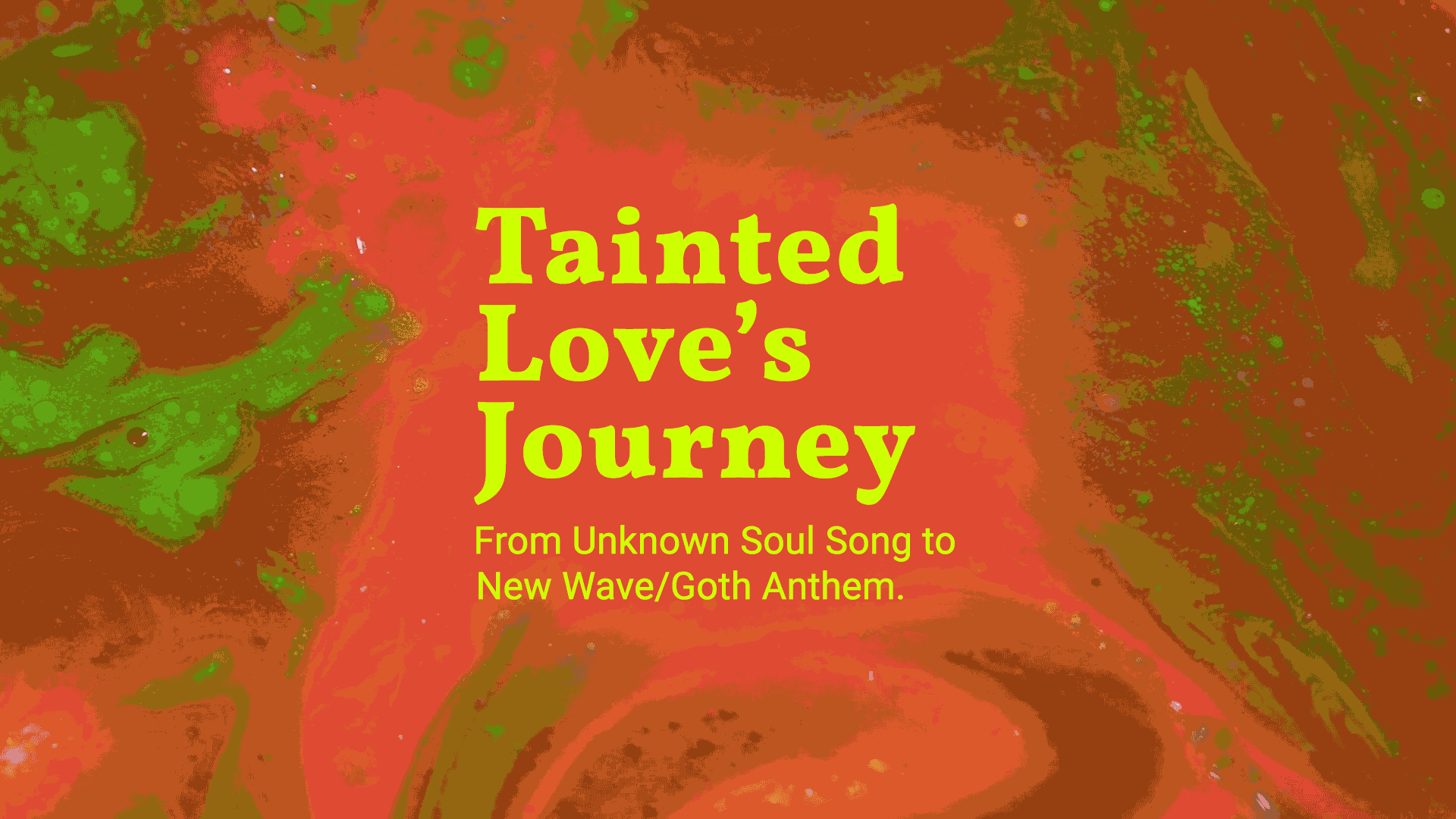Tainted Love’s Journey From Unknown Soul Song to New Wave/Goth Anthem.
By Frank Esparros, Contributor
In 1964 Gloria Jones recorded the now world-famous “Tainted Love”, but upon its initial release, it was a relatively unknown b-side and stayed that way for around 10 years. In the early 70s, “Tainted Love” was given a second life after being dug up by North English DJs who were pioneering a new movement called “Northern Soul” in which they would dig up obscure American Soul tracks with a BPM of 100 or higher to play on the radio. These quick tempoed, dancy tracks found a new home at British nightclubs. “Northern Soul” was not so much its own genre, but rather a niche cultural movement that would have a long-lasting legacy—inspiring much of the British rave scene that followed. Gloria Jones would re-record the song in 1976 but again, this failed to reach mainstream audiences.
In 1981 “Tainted Love” had finally achieved world-wide recognition with Soft Cell’s now-iconic cover which exchanges the soul choir and horns for a minimal synth line. It reached number one on the UK Single Chart and became the best selling single that year. The track has been covered dozens of times by artists of all backgrounds, but most interestingly, it has become a sort of goth and industrial anthem.
Ten years after Soft Cell’s cover, seminal industrial group Coil would cover the song for their 1991 album Scatology. Coil’s cover is vastly different from Soft Cell and Gloria Jones versions. It is injected with a much more haunted quality: the tempo is slowed and the instrumental is made up of foreboding synths, church bells, and harsh synth blasts. Why Coil’s interpretation stands out is because the context is much grimmer. Coil, made up of two queer artists, John Balance and Peter Christopherson, wrote it in response to the 1980s AIDS crisis. The music video has John Balance halfway obscured by a gossamer sheet, kneeling over a dying man in a hospital bed in a sort of prayer. At the end of the video a grave is shown and an announcement reads that all of the proceeds of the track are going to an AIDS information and counseling organization. Suddenly the title “Tainted Love” becomes about much more than just a complicated romantic relationship. Lyrics like “this tainted love you’ve given me,” and “don’t touch me please” are imbued with a tragic reality.
In 2001, the track would again be resurrected in an unlikely place—it was covered by industrial artist Marylin Manson. Manson’s recording is not found on one of his albums but was rather recorded for the 2001 film Not Another Teen Movie’s soundtrack. Manson takes it back to its fast tempo club origins but keeps the more abrasive and dark tone of Coil’s cover. This music video is a merging of goth and bling-era hip hop as Manson pulls up to a teen party in a black lowrider with a goofy, albeit tasteless, license plate that reads: “Goth Thug”. It periodically cuts to Manson in baggy clothes, a du-rag, and a diamond chain with an “M” dangling from it. It’s fun and silly, featuring Manson with his goth clique invading a teen party which quickly goes from preppy event to impromptu industrial nightclub. It subverts the popular jock vs. lame goth motif and even has Manson pushing then-unknown actor, Chris Evans— who dons a letterman jacket and seems less than enthused at the appearance of Manson and co.— out of the way. Manson’s “Tainted Love” music video is an all-timer. It’s a relic of the early aughts. There is even the “nerdy girl takes off glasses and becomes cool” trope jammed in there—but instead of becoming the prom queen, she transforms into a Manson-Esque Goth.
“Tainted Love” has traveled from soul b-side to North English club track, new wave anthem, AIDS elegy, and fun single off a teen movie soundtrack. With each generation, the song is dusted off again and finds new popularity with music fans. It’s a testament to its versatility. The song is dark in nature, which is perhaps why it has found popularity with the goth and industrial crowds. Its lyrics are ambiguous enough to appear universal. The song can be made to be fun or dark—loud or soft—bombastic or reserved. The song’s sound has drastically departed from its origins in a way that not many covers have.

